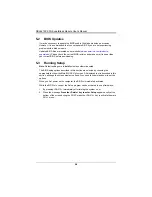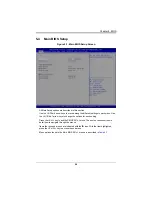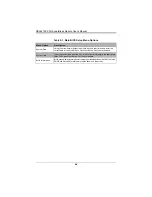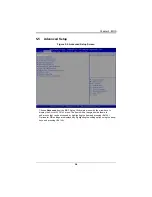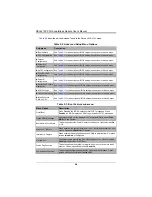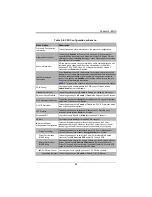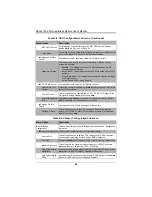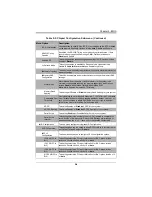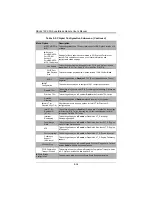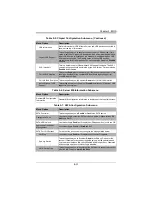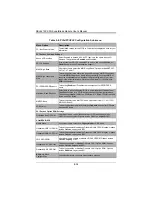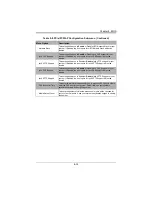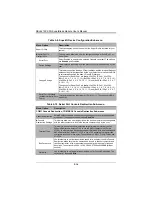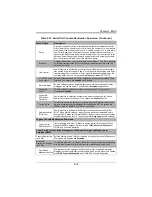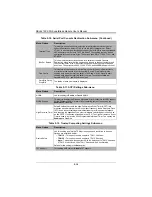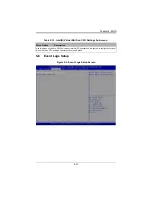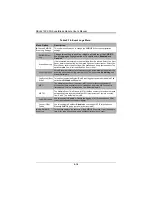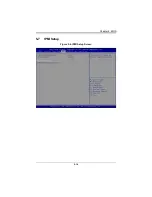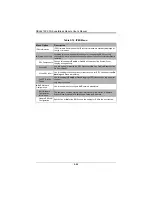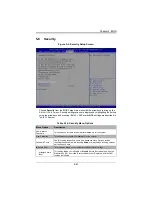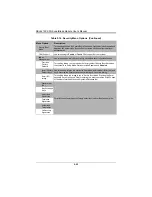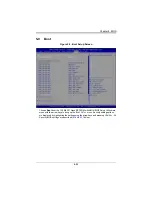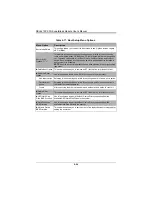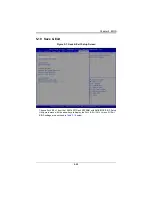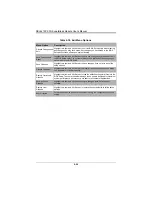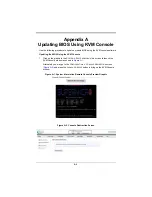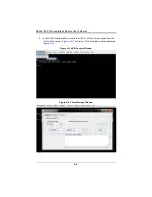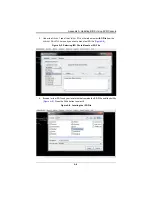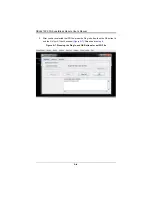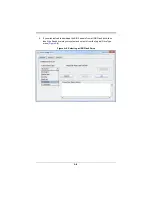
SBI-6419P-C3N SuperBlade Module User’s Manual
5-16
Terminal Type
This feature allows the user to select the target terminal emulation type for
Console Redirection. Select VT100 to use the ASCII character set. Select
VT100+ to add color and function key support. Select ANSI to use the extended
ASCII character set. Select VT-UTF8 to use UTF8 encoding to map Unicode
characters into one or more bytes. The options are ANSI, VT100, VT100+, and
VT-UTF8
.
Bits Per Second
This item sets the transmission speed for a serial port used in Console
Redirection. Make sure that the same speed is used in the host computer and
the client computer. A lower transmission speed may be required for long and
busy lines. The options are 9600, 19200, 57600, and
115200
(bits per second).
Flow Control
This feature allows the user to set the flow control for Console Redirection to
prevent data loss caused by buffer overflow. Send a "Stop" signal to stop
sending data when the receiving buffer is full. Send a "Start" signal to start
sending data when the receiving buffer is empty. The options are
None,
Hardware RTS/CTS, and Software Xon/Xoff.
Data Bits, Parity,
Stop Bits
The status of each item above is displayed.
Table 5-11. ACPI Settings Sub-menu
Menu Option
Description
NUMA
Use this setting to
Enable
or Disable NUMA.
WHEA Support
This feature Enables the Windows Hardware Error Architecture (WHEA) support
for the Windows 2008 (or a later vision) operating system. The options are
Enabled
and Disabled.
High Precision Timer
Select Enabled to activate the High Performance Event Timer (HPET) that
produces periodic interrupts at a much higher frequency than a Real-time Clock
(RTC) does in synchronizing multimedia streams, providing smooth playback
and reducing the dependency on other timestamp calculation devices, such as
an x86 RDTSC Instruction embedded in the CPU. The High Performance Event
Timer is used to replace the 8254 Programmable Interval Timer. The options are
Enabled
and Disabled.
Table 5-12. Trusted Computing Settings Sub-menu
Menu Option
Description
Device Select
Use this setting to select the TPM device support and restriction to be used.
Options are described below:
•
TPM 1.2
– This option restricts support to TPM 1.2 devices.
•
TPM 2.0
– This option restricts support to TPM 2.0 devices.
•
Auto
– This option will support both with the default set to TPM 2.0 devices.
If TPM 2.0 is not found, then TPM 1.2 devices will be enumerated.
Default for this setting is the
Auto
option.
TXT Support
This setting will Enable or
Disable
TXT support.
Table 5-10. Serial Port Console Redirection Sub-menu (Continued)
Menu Option
Description
Summary of Contents for SuperBlade SBI-6419P-C3N
Page 1: ...SBI 6419P C3N SuperBlade Module User s Manual Revison 1 0 ...
Page 4: ...SBI 6419P C3N SuperBlade Module User s Manual iv ...
Page 8: ...SBI 6419P C3N SuperBlade Module User s Manual viii Notes ...
Page 30: ...SBI 6419P C3N SuperBlade Module User s Manual 2 18 ...
Page 33: ...3 3 Chapter 3 Setup and Installation Figure 3 1 Inserting a Blade into the Enclosure ...
Page 51: ...SBI 6419P C3N SuperBlade Module User s Manual 3 21 Notes ...
Page 52: ...SBI 6419P C3N SuperBlade Module User s Manual 3 22 ...
Page 79: ...5 19 Chapter 5 BIOS 5 7 IPMI Setup Figure 5 4 IPMI Setup Screen ...
Page 96: ...SBI 6419P C3N SuperBlade Module User s Manual A 10 ...

